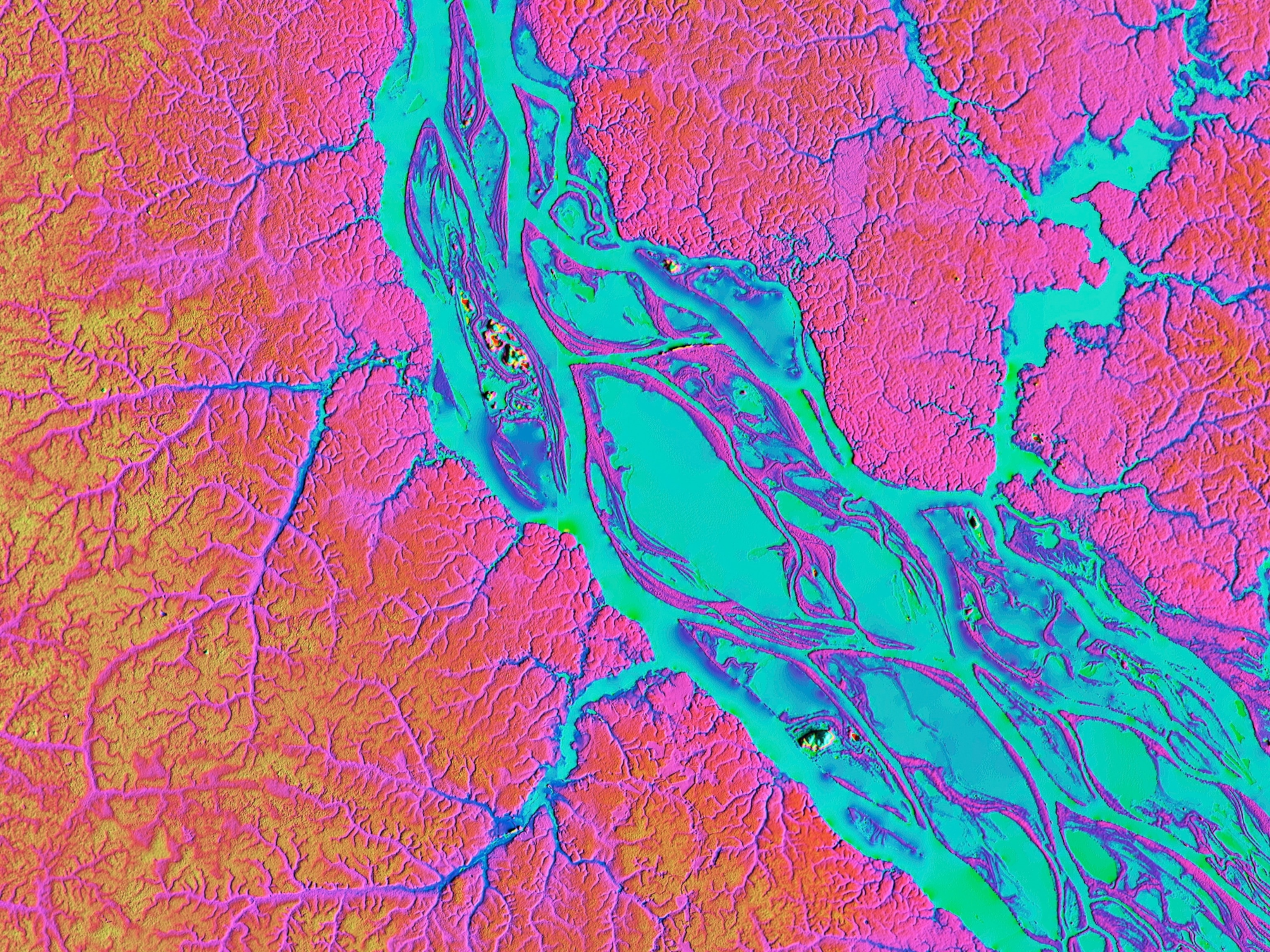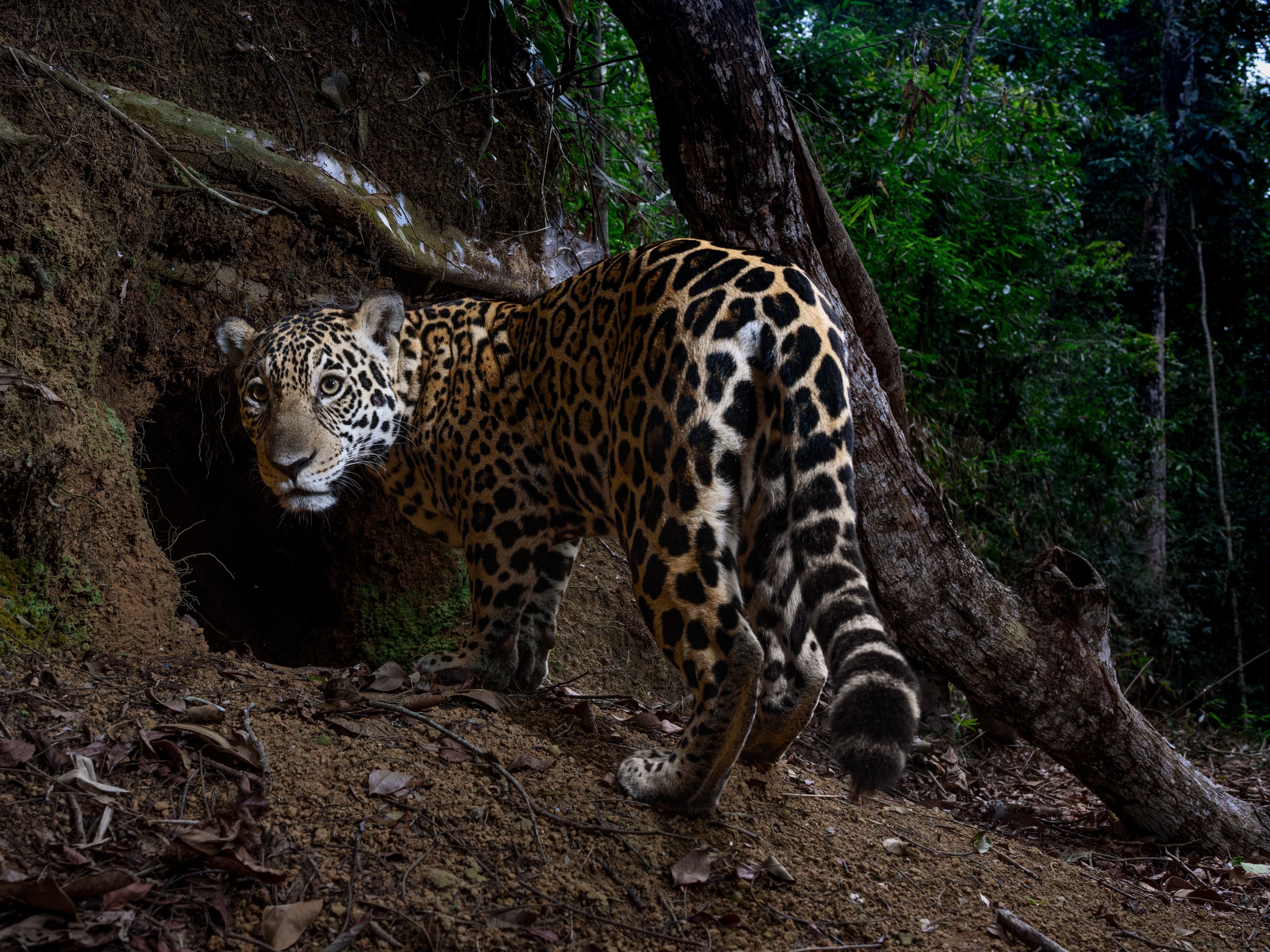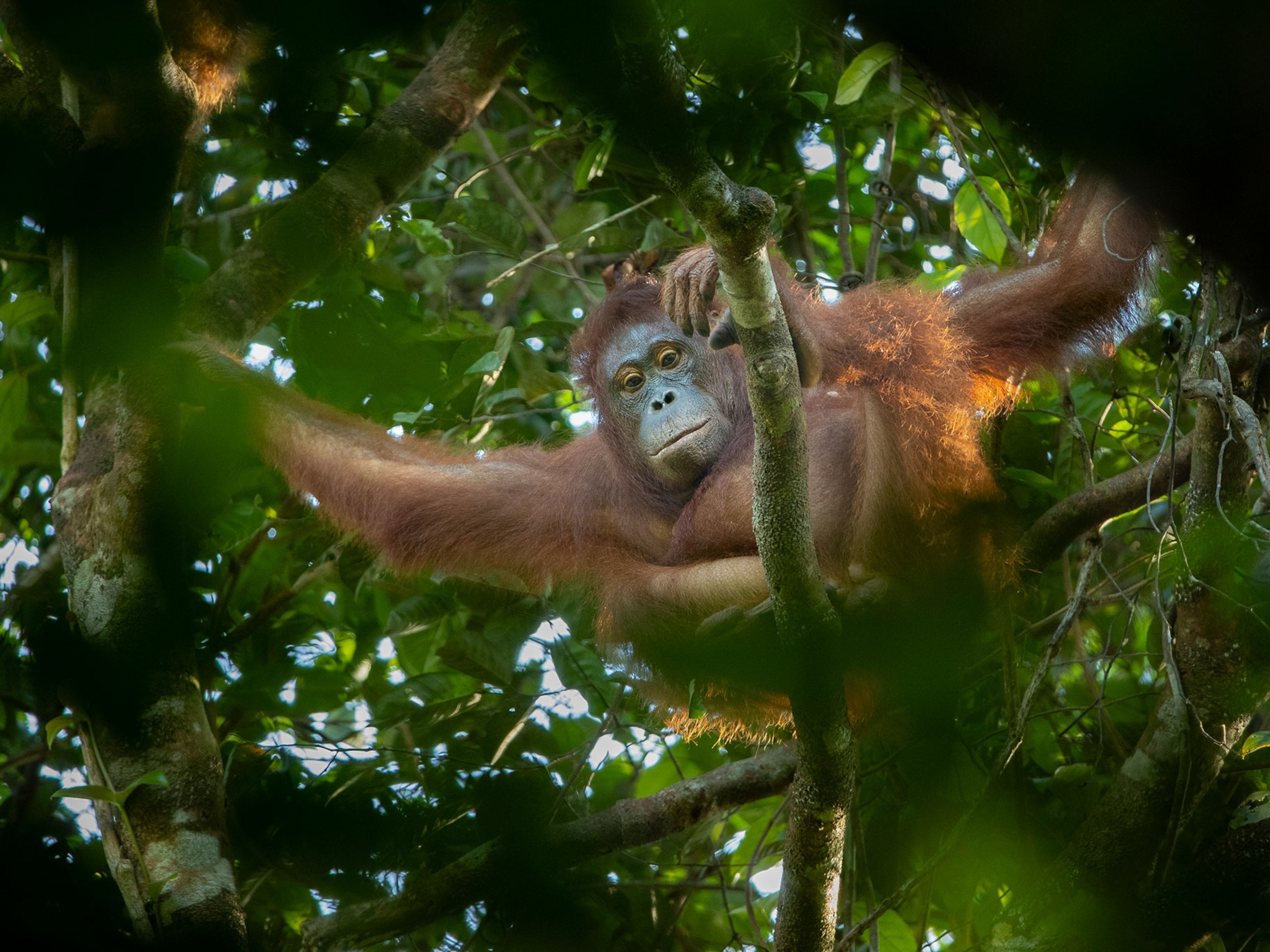
New Pinocchio frog species has a strange, pointy nose
“You could say it found us, rather than we found it,” scientist says of the curious-looking Indonesian tree frog.
In the mountainous forests of New Guinea, scientists have described a new kind of tree frog whose males sport a single, fleshy spike on their nose.
Ladies and gentlemen, meet the northern Pinocchio frog.
Paul Oliver, a herpetologist at the Queensland Museum and Griffith University in Australia, actually discovered these curious-looking amphibians on a field expedition back in 2008, while he and his crew were hiding from the rain in Indonesia’s Foja Mountains.
He happened to look over and spot the mottled green, brown, and yellow frog sitting atop a bag of rice. (Read more about the Foja Mountains' incredibly diverse rainforests.)
“You could say it found us, rather than we found it,” says Oliver, who officially described the new species, Litoria pinocchio, in the latest issue of Zootaxa.
The Pinocchio frog is just one of a handful of New Guinea treefrogs in the same genus that sport these spiky noses, or rostrums. Oliver and his team described two other new species in another recent paper, also in Zootaxa.
Now, Oliver and his colleagues are hard at work trying to figure out what that adorable little schnozzes are for.
“What is particularly striking is that it is erectile,” Oliver says in an email. “At times it sticks out quite straight, while at other times it droops downward. So, they are pretty elaborate structures that must have some purpose.” (Read about an “extinct” Pinocchio lizard rediscovered in Ecuador.)
Nosing around
One theory is that the nose attracts females—but that is problematic, he says.
See amazing amphibian pictures
“When other biologists have looked at breeding choruses of spike-nose frogs, they have found that there is no pattern in the lengths of spikes on the males the females mate with,” he says. (See five animals with weird noses.)
Oliver also suspects the spikes could help the frogs identify one species from another in the species-rich forests. With more than 450 species of frogs already described, and many more out there yet to be discovered, New Guinea—the world’s second-largest island—has more frog species than any other island in the world.
“I tend to favor the second theory,” says Oliver. “But the truth is, like so much in biology, we don’t really know.”
“Island of opportunity”
Though we don’t tend to think of the southern Pacific island—divided between Indonesia and Papua New Guinea—as a frog paradise, New Guinea has a similar number of frogs per area as the Amazon rainforest, notes Debbie Bower, a conservation biologist at the University of New England in Australia.
“Continued discoveries of unique species that have remained unknown to science demonstrate how little we know about biodiversity in remote places like New Guinea,” says Bower.
“The Pinocchio frog is one such example and highlights how important it is to enact conservation strategies that prevent and prepare for key threats like the amphibian chytrid fungus.” (See 13 gorgeous pictures that remind us why frogs need our help.)
In fact, Bower describes New Guinea—which is so far free of chytrid—as an “island of opportunity,” because it could become a safe haven for the world’s amphibians. She published a recent paper in the journal Frontiers in Ecology and the Environment calling on New Guinea to plan now for the fungus’ arrival and slow its spread if it arrives.
“If we do not focus research and conservation in refuges like New Guinea,” she says, “we risk losing species that we did not know existed.”




























